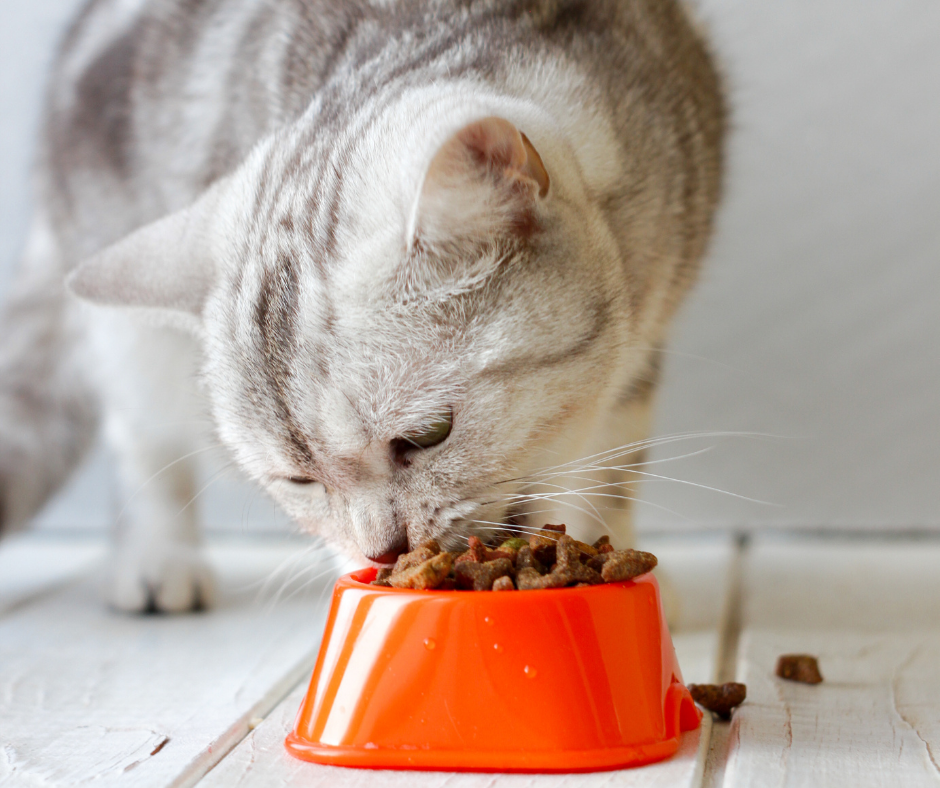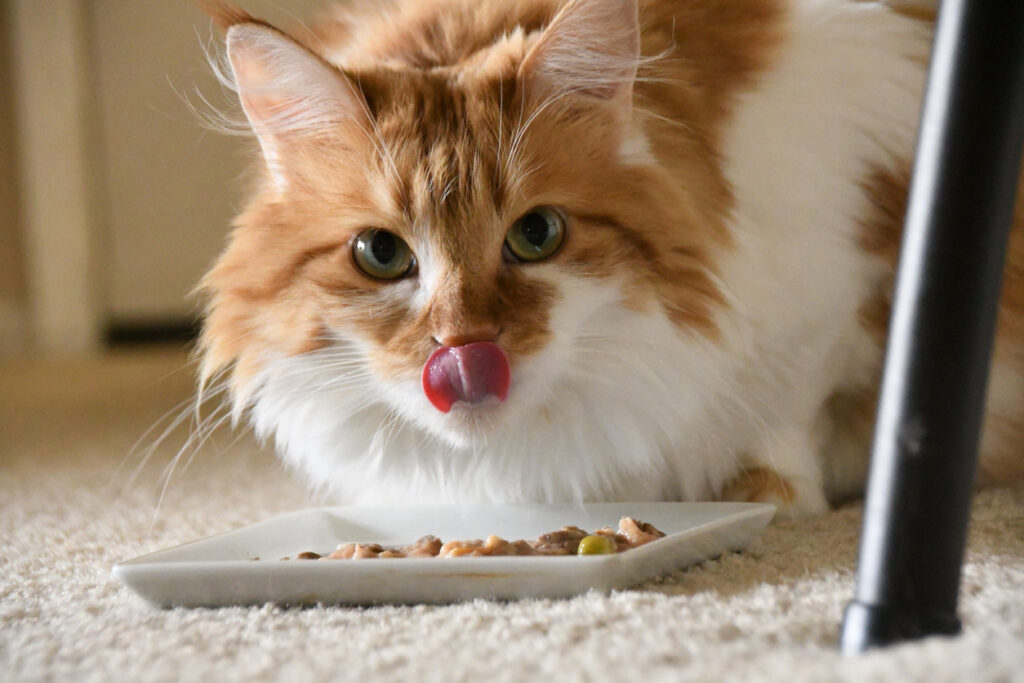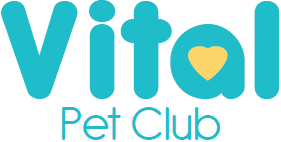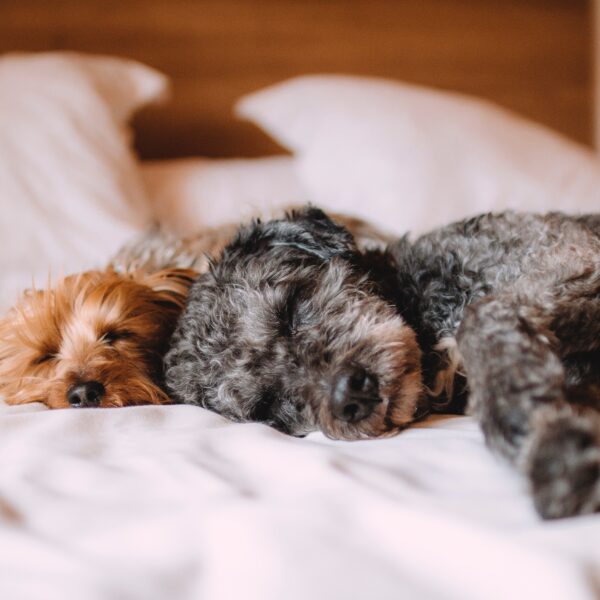How to choose.
It can feel like there is a mind-boggling array of different diets, and one of the choices to make is whether to feed wet or dry cat food or a combination of the two. Dry cat food is often referred to as ‘kibble’ or ‘cat biscuits’. Wet cat food will be chunks of meat or fish in a gravy or jelly, or sometimes more of a pâté, and it generally comes in a sachet, pouch or tin. An expert pet retailer will be able to talk you through the diets available, and explain how to find a high-quality cat food that fits your pet’s lifestyle and life-stage. Plus, read on for our detailed guide.
Wet vs dry cat food? Pros and cons
Wet cat food will generally have a stronger smell than dry which makes it more appealing to some pets. Wet cat diets are often less calorie dense than dry, meaning portion sizes can be larger, although this varies between products. A wet diet might be advised by a vet to help manage certain medical conditions where higher liquid intake is helpful, such as kidney disease. Cats with kidney disease lose more water through their urine as their kidneys are not functioning normally.
Down-sides of wet food include links to a higher risk of dental disease, and issues with storage. Wet diets usually need to be kept in the fridge once opened, and discarded within the time-frame advised on the packet.
Dry cat food is handy to feed as it is easy to weigh consistent portions, and it keeps well if stored correctly. Some types of kibble have the added benefit of helping to keep your cat’s teeth and gums healthier. For overweight cats, it may be easier to find a lower fat dry food to help with weight loss. The main disadvantage is that some fussy felines are not that keen on dry food, although others may love to nibble their kibble!
Which do cats prefer – Dry cat food or wet?
The palatability of a diet can be very dependent on the preferences of your individual pet. Palatability includes how much the cat likes the texture, smell and taste of a food. Smell is a particularly strong sense for felines, so this is even more important than it would be for other species of pet. Palatability can be affected by other factors such as temperature with many cats preferring food that has had a chance to warm up, rather than coming straight from the fridge. Cats will often like the food that they were fed as a young kitten and some pets are very neophobic, disliking any change to their diet. These individuals can also develop aversions to a diet if they have a negative experience while they are eating, such as being chased off by another pet. They can also be put off a diet if it is left down for too long. Other cats are neophilic, and love trying new foods, so might enjoy different flavours for their dinner. As a general rule though, it is safest to stick with the same brand and portion size where possible, as sudden dietary changes can lead to gastrointestinal upset.

Can I mix wet or dry cat food?
It is common for cat owners to feed a mix of wet and dry cat food, but these are usually offered in separate bowls and many cats will show a preference for one or the other. If you decide to mix and match wet and dry diets, it is often easiest to ensure that your cat is getting a balanced diet and eating the correct portions if you pick options from the same pet food brand.
The reason for this is that there will generally be a cat feeding guide on the food packet, and some brands will offer advice on feeding wet and dry products alongside each other. Otherwise, you can contact them for advice on how much cat food per day should be fed of each sort.
The recommended portion is usually given according to your pet’s weight and activity level. However, body condition is a better indicator than body-weight as it takes into account height and frame. The Pet Food Manufacturer’s Association (PFMA) has some really useful charts, or you can ask your vet how to assess your cat. Once you become familiar with how to do this, you can increase or decrease your pet’s daily food intake until you find a portion size that maintains a healthy body condition score. Remember to include any treats in your calculations!
Is dry cat food bad?
No – there are plenty of great options for dry cat food, and these diets will be nutritionally complete. This means that your cat does not need to be fed anything else alongside, unless a vet has recommended switching to a wet cat food vs dry for specific health reasons. Be sure there is always plenty of fresh water available as they will need to drink more than pets on a wet cat diet. You can also add water to dry cat food, although this is not necessary unless the vet has recommended increasing their water intake or softening the food due to dental disease. However, dry food should never be stored with the added water.
How is dry cat food made?
In the UK most kibble is manufactured by extrusion. Most of the moisture will be removed from the ingredients which can be mixed together with some fresh liquid to form a dough. This is cooked under heat and pressure in the extruder machine, and then cut out into the correct shape and size before drying. Sometimes the kibble will have a tasty coating added at this stage. It is then cooled, packaged and sealed.
Can I free feed my cat?
It is still relatively common for owners to free feed their cats by leaving a bowl of kibble accessible at all times. However, this is typically advised against now as many cats tend to eat excessively and gain weight when free fed, which increases the risk of some health problems such as diabetes.
Free feeding also makes it difficult to monitor changes in appetite or feeding behaviours, with these subtle signs often acting as a useful first indicator of illness. If your pet is used to free feeding and you are looking to make the switch away from this, puzzle feeding can be a great way to provide mental stimulation around mealtimes.
Leaving a bowl of food available all the time is also tricky in multi-cat households as it can lead to competition over access to food. To help avoid this, you should have one food bowl per cat plus a spare – most pets do not enjoy sharing with their fur-siblings, even if they get along well.
A vet may recommend free feeding in senior felines with certain health conditions, or in young kittens that are growing quickly. Be sure to replace kibble frequently, and do not leave wet food out all day.

Should kittens be fed wet or dry cat food?
Young kittens will be weaned onto a wet kitten diet by the breeder, although they may also be eating biscuits when you bring them home. Dry biscuits are often introduced with added water to begin with. It is best to stick with the same diet initially, and make any changes very gradually, mixing a small portion of new food into the old diet and gradually increasing the proportion of new. This helps to avoid diarrhoea resulting from sudden changes.
Kittens should be fed diets that are appropriate for their life stage as they are growing very fast and have different nutritional requirements to an adult cat. They need higher levels of calories and protein, plus the correct calcium: phosphorous balance for bone development. Kitten diets often contain more Vitamin E and selenium which are thought to support a healthy immune system, and DHA omega fatty acids which may benefit the development of their brain and nervous system.
Found these tips helpful? Sign up below to be the first to hear about exclusive pet freebies and pet care tips!
Are cats carnivores? Find out the answers to more of your pet food questions here.


